From Harnessing the Wind & Water to Modern A/C
Air conditioning has become an integral part of modern life. It provides comfort in our homes and workplaces, allowing us to go about our daily activities with ease, regardless of the temperature outside. In fact, without air conditioning, many aspects of modern society, from high-tech industries to the way we design buildings, would be impossible.
In the scorching heat of summer or the icy chill of winter, air conditioning systems make life more comfortable, productive, and enjoyable. With the increasing demand for HVAC parts and services, businesses like www.technicalhotandcoldparts.com have become indispensable in maintaining these systems. But how did we come to rely so heavily on this technology?
How was air conditioning invented? To answer these questions, we need to look back in time and trace the development of air conditioning technology. This journey will take us through ancient civilizations, the Industrial Revolution, and the innovations of the 20th century, culminating in the cutting-edge HVAC systems we use today.
Table of Contents
- Introduction
- Cooling Methods Before Air Conditioning
- Natural Ventilation
- Water as a Cooling Medium
- Wind Catchers
- Ice: The Ancient Cooling Solution
- Mechanical Ventilation
- The Pioneers of Early Cooling Science
- William Cullen: The First Experiment in Refrigeration
- Benjamin Franklin and John Hadley: Further Discoveries in Cooling Science
- Competing Measurements in Early Cooling: Thomas Tredgold and Nicolas Clément
- Michael Faraday's Pioneering Work with Ammonia
- John Gorrie’s Invention of the Ice-Making Machine
- Schuyler Skaats Wheeler: The Role of Electric Cooling Fans in the Pre-Air Conditioning Era
- The Genius of Willis Haviland Carrier
- Why Did Willis Carrier Invent the Air Conditioner?
- The Evolution and Expansion of Carrier's Vision
- Carrier's Lasting Impact and Legacy
- Evolution of Air Conditioning into What It Is Today
- The 1920s: The Advent of Cooling in Public Spaces
- The 1930s: Pioneering Commercial Use
- The 1940s: Wartime Innovations and Post-War Boom
- The 1950s: Mass Market Accessibility
- The 1960s: Central Air Conditioning
- The 1970s: Energy Crisis and Efficiency
- The 1980s: Digital Age and Programmable Thermostats
- The 1990s: Environmental Concerns and Innovations
- The 2000s: Smart Home Integration
- The 2010s: AI, IoT, and the Rise of Eco-Friendly Units
- 2020 and Beyond: Sustainable and Health-Focused Innovations
- Reflecting on the Journey of Air Conditioning: From Humble Beginnings to Modern Innovations
- Get the A/C Repair Parts You Need
Cooling Methods Before Air Conditioning
Natural Ventilation
Long before the invention of air conditioning, people relied on natural ventilation to keep their homes and buildings cool. This was achieved through thoughtful architectural design. Ancient civilizations built structures with high ceilings, large windows, and wide-open spaces to take advantage of natural airflow. Some houses were constructed with thick walls and small windows to insulate the interior from external heat. A common feature of many ancient buildings, particularly in hot climates, was the inclusion of courtyards or gardens, which provided shaded areas and facilitated airflow.
The chimney effect, for instance, utilized vertical structures to allow warm air to rise and escape, drawing cooler air from lower openings, a principle seen in various buildings across different cultures.
Water as a Cooling Medium
Water has been used as a cooling medium since ancient times. The ancient Egyptians, Persians, and Romans utilized fountains, pools, and aqueducts to cool the air in their palaces and public spaces. The concept of evaporative cooling was also well-known to these civilizations. For example, ancient Egyptians hung wet reeds in windows to cool the incoming breeze. In Persia, wind catchers called "badgirs" were used to funnel cool air into buildings.
To increase the efficacy, water was placed inside the shaft, or the opening had a water-soak mat hung across it. The evaporating water would lower the temperature of the air and provide a cooling effect.This method was complemented by architectural elements like salsabils (marble slabs within fountains to increase water movement and evaporation) and mashrabiya (carved wooden screens on façades to cool and humidify incoming air).
Wind Catchers
In the Middle East, wind catchers, also known as malqafs, badgirs, wind towers, or wind scoops were architectural features designed to catch and funnel cool air into buildings. These towers were positioned to capture the prevailing wind, and the air was then directed downward into the living spaces. This natural ventilation technique helped to cool homes in the hot desert climate.
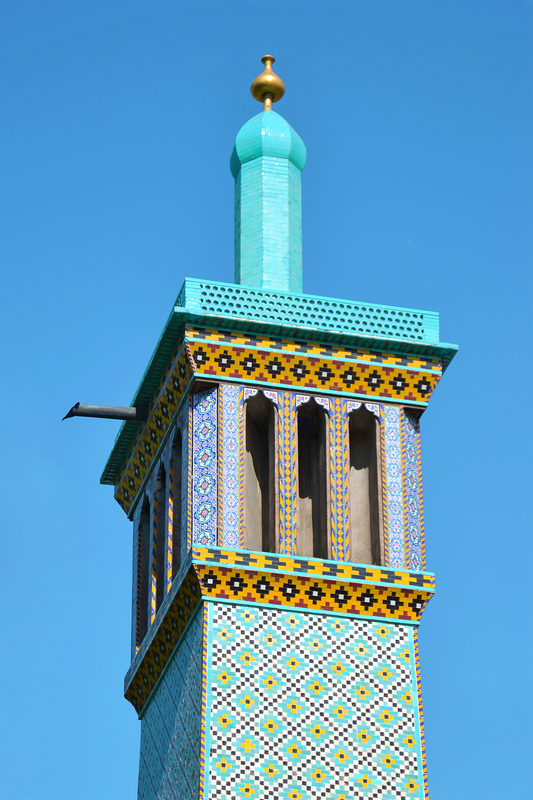
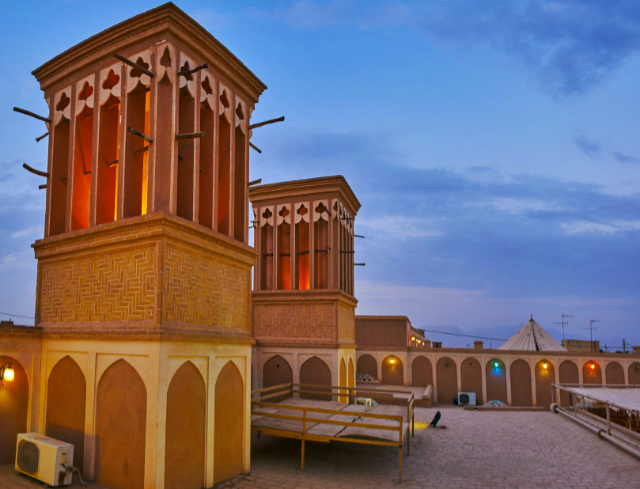
Ice: The Ancient Cooling Solution
Long before modern refrigeration technology emerged, ice was one of the primary means to counteract the sweltering heat. Massive blocks of ice were harvested from natural sources during the winter months and stored in specially designed icehouses. As summer approached, these blocks were strategically placed in buildings, often in basements or designated "cooling rooms", to provide some respite from the heat. As the ice melted, the latent heat of fusion would absorb the surrounding warmth, effectively cooling the immediate environment.
Frederic Tudor, known as the "Ice King," played a pivotal role in commercializing ice as a commodity in the early 19th century. Tudor pioneered the practice of shipping ice from New England to warmer climates, such as the Caribbean and the southern states of America, revolutionizing the way ice was used and distributed. Despite initial skepticism and numerous challenges, Tudor's ventures eventually turned profitable, significantly lowering the price of ice and making it a mass-market commodity by the early 1830s. This development laid the groundwork for the widespread adoption of refrigeration technology.
Later on in the 1800’s, the effectiveness of this cooling method was quantified using the British Thermal Unit (BTU). A BTU represents the amount of heat required to increase the temperature of one pound of water by one degree Fahrenheit. In the context of ice, it can measure the amount of heat the ice can absorb as it melts without increasing in temperature. When trying to cool a large room or building, knowing the BTUs of the ice blocks used could provide a rudimentary understanding of how much cooling effect one could expect.
Mechanical Ventilation
Before the advent of electric fans, people used various mechanical devices to generate airflow. Hand-powered fans made of palm leaves, feathers, or fabric were widely used across different cultures.
In ancient China, inventors developed large rotary fans powered by human labor. One of the most notable inventions came from Ding Huan, a Chinese engineer and inventor of the Han Dynasty. Ding Huan designed a seven-bladed rotary fan that was driven by manual power. It was an impressive contraption that could cool an entire hall of people when operated by a single person. This invention, known as the "Cool Hall Fan," was an early precursor to modern mechanical ventilation and was employed in the imperial courts to provide relief from the heat.
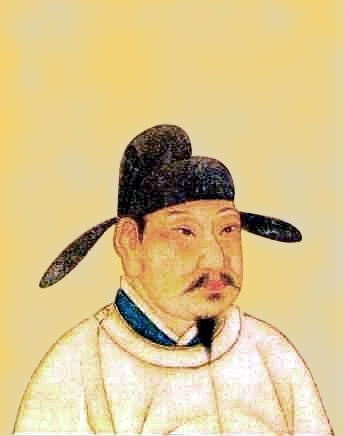
In ancient Rome, slaves would use large fans to ventilate dining rooms. These fans were often made of large leaves or fabric, and they were manually waved to create airflow and circulate cooler air throughout the room.
Windmills, widely used for milling grain, were sometimes adapted to power ventilation systems. As windmills captured the wind's energy to turn their blades, this rotational motion could be harnessed to drive fans or pumps that circulated air in buildings.
These early methods of mechanical ventilation laid the foundation for future advancements in cooling technology. The principles of airflow and circulation used in these ancient inventions continue to be essential components of modern air conditioning and ventilation systems.
The Pioneers of Early Cooling Science
Following the ancient and traditional methods of cooling, the world witnessed a notable shift from merely managing airflow for cooling to a more scientific understanding of the principles governing temperature reduction. It was during this interim period that many renowned figures made crucial strides that would bridge the gap between rudimentary cooling methods and more sophisticated air conditioning technologies.
William Cullen: The First Experiment in Refrigeration
In 1755, Cullen conducted an experiment that would lay the groundwork for the science of refrigeration. At the University of Glasgow, he showcased a remarkable process: the rapid evaporation of ether in a partial vacuum, which resulted in a significant drop in temperature. This experiment was one of the first times the principles of cooling were demonstrated in a controlled environment.
His experiment used a pump to generate a partial vacuum over a vessel containing diethyl ether. As a result, the ether boiled, drawing heat from its surroundings. Remarkably, this experiment didn't just cool the ambient air; it produced a trace amount of ice. While this marvel didn't find a practical purpose immediately, it set the wheels in motion for future innovators.
Although Cullen never pursued the practical applications of his discovery for everyday use, his work sparked interest and inspired future scientists and inventors. Without Cullen's foundational experiment, the evolution of cooling and refrigeration might have taken a very different path.
Benjamin Franklin and John Hadley: Further Discoveries in Cooling Science
Nearly three years after Cullen's discovery, across the sea at Cambridge University, England, Benjamin Franklin and Professor John Hadley embarked on a collaborative project. Their goal was to delve deeper into the concept of evaporation as a mechanism for rapid cooling.
Their experimentation confirmed a riveting theory: volatile liquids, such as alcohol and ether, upon evaporation, could plummet an object's temperature beyond the water's freezing point. Employing a mercury thermometer's bulb as their test object and utilizing a bellows to expedite the evaporation process, the duo astoundingly decreased the bulb's temperature to 7 °F (-14 °C), all the while the surrounding atmosphere was a balmy 65 °F (18 °C).
As they approached the water's freezing point at 32 °F, a remarkable observation was made—a crystalline layer of ice began to envelop the thermometer's bulb. By the time their experiment concluded at 7 °F (-14 °C), this icy sheath was a robust quarter-inch in thickness. Franklin, ever the astute observer, mused on the implications, remarking, "From this experiment, one may see the possibility of freezing a man to death on a warm summer's day."
The revelations by Franklin and Hadley were pivotal. They shifted the discourse from basic ventilation and airflow methods to a more profound understanding of the principles that underpin cooling. Their work acted as a bridge, providing the scientific underpinnings that would be vital for subsequent advancements in the field.
Competing Measurements in Early Cooling: Thomas Tredgold and Nicolas Clément
As scientific understanding and technological innovation in the field of cooling and thermodynamics advanced, the 19th century saw a burgeoning need for standardization. Accurate measurements and definitions became essential for researchers, engineers, and inventors. Two figures prominently stood out in this quest for standardization: Thomas Tredgold and Nicolas Clément.
Thomas Tredgold was an English engineer known for his writings on various engineering topics. In the realm of heating and cooling, Tredgold introduced the concept of a "British Thermal Unit" or BTU. Defined as the amount of heat required to raise the temperature of one pound of water by one degree Fahrenheit, the BTU became a foundational unit in understanding and measuring heat energy. Tredgold's definition, rooted in practical applications, aimed at providing engineers with a tangible measure that could be applied across various systems, particularly in the burgeoning field of steam engineering.
Across the English Channel, Nicolas Clément, a French engineer and inventor, was working on a parallel but distinct measurement system. Clément introduced the "calorie" as a metric measure, defined as the amount of heat energy required to raise the temperature of one gram of water by one degree Celsius. Given the metric system's dominance in European scientific circles, Clément's calorie found widespread acceptance and was particularly influential in the studies of thermodynamics and calorimetry.
Legacy of the Measurements Today
Fast forward to today, both BTU and calorie remain integral in their respective domains. The BTU is predominantly used in the Anglo-American realm, particularly for appliances like air conditioners, heaters, and furnaces. Its legacy is testament to Tredgold's vision of creating a standardized measure that resonates with the practical needs of engineers.
On the other hand, the calorie, with its metric roots, has found universal acceptance in the field of nutrition and food science. It is the standard measure for expressing energy content in food, something every consumer encounters on food labels around the world.
Interestingly, in the nuanced field of thermodynamics, both BTU and calorie coexist. Engineers, depending on their geographic or academic orientation, may favor one over the other, but both units are understood and respected. This coexistence symbolizes the rich tapestry of scientific history where parallel efforts often lead to diverse yet enduring legacies.
As we transition from these foundational discoveries, another significant development was on the horizon. It was not long after that Michael Faraday would make his own mark, demonstrating the cooling potential of compressing and liquefying ammonia, pushing the boundaries of what was possible in the realm of artificial cooling.
Michael Faraday's Pioneering Work with Ammonia
Following the foundational work on evaporation by Franklin and Hadley, the 1820s and 1830s saw another significant stride in the domain of cooling and thermodynamics. This progress was led by the iconic scientist, Michael Faraday. Renowned for his in-depth studies in electromagnetism and electrochemistry, Faraday turned his attention to the properties of certain gases and their potential applications in cooling.
In a series of experiments conducted in the early 1820s, Faraday began liquefying various gases. His most notable discovery was with ammonia. Faraday observed that when ammonia was compressed into a liquid form and then allowed to evaporate, it would rapidly absorb an ample amount of heat from its surroundings. This cooling effect was considerably more potent than that of water evaporation. His findings highlighted ammonia's potential as a robust refrigerant, and this set the foundation for its use in subsequent cooling and refrigeration systems.
Fun Fact: Faraday's influence extends well beyond refrigeration. In the realm of electrical engineering, the measure of capacitance, a fundamental property of capacitors, is named the "farad" in his honor. Capacitors, which store and release electrical energy, are crucial components in today's air conditioning units, ensuring efficient and safe operation.
The meticulous work of Faraday, combined with insights from Franklin and Hadley, laid the groundwork for practical applications of these principles. Enter John Gorrie, an inventor inspired by these breakthroughs, whose ice-making machine would come to harness the principles of compression and expansion, setting the stage for modern air conditioning.
John Gorrie’s Invention of the Ice-Making Machine
Before the invention of the ice-making machine, ice was a luxury commodity that was harvested in the winter and stored for use in the warmer months. However, this process was inefficient and expensive. The development of the ice-making machine marked a significant step forward in the journey towards modern air conditioning.
In the 19th century, inventors around the world began experimenting with machines that could produce ice. Among them was John Gorrie, an American physician and inventor. In 1842, Gorrie developed a machine that used compressed air to create ice. He initially designed this machine to cool the rooms of his patients suffering from yellow fever in Apalachicola, Florida. Gorrie believed that cooling could not only provide comfort but also have therapeutic benefits.
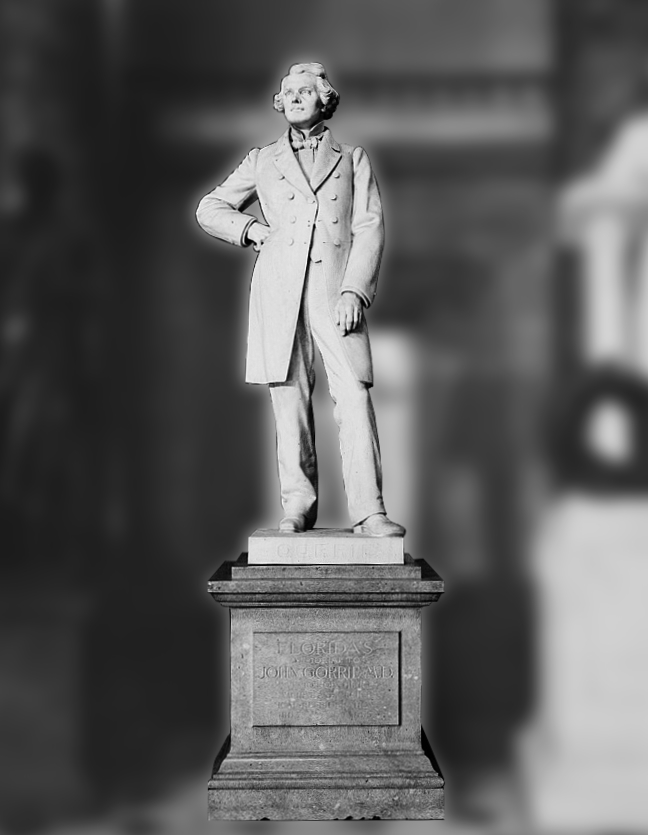
Gorrie's ice-making machine was a precursor to modern refrigeration technology. It laid the foundation for the development of air conditioning systems. Gorrie was awarded a patent for his invention in 1851, and he even attempted to commercialize his machine. However, he faced financial difficulties and skepticism from the public, and his venture was not successful.
Despite these setbacks, the concept of artificial cooling had been introduced, and other inventors soon followed in Gorrie's footsteps. Over the following decades, advancements in thermodynamics and engineering led to the creation of more efficient and reliable ice-making machines. These machines began to be used in a variety of applications, from preserving food to making ice for recreational purposes.
The ice-making machine was a critical stepping stone in the development of air conditioning technology. The ability to produce ice on demand, regardless of the season, paved the way for the invention of systems that could cool and dehumidify the air. This progress would eventually lead to the creation of the modern air conditioning systems that we rely on today.
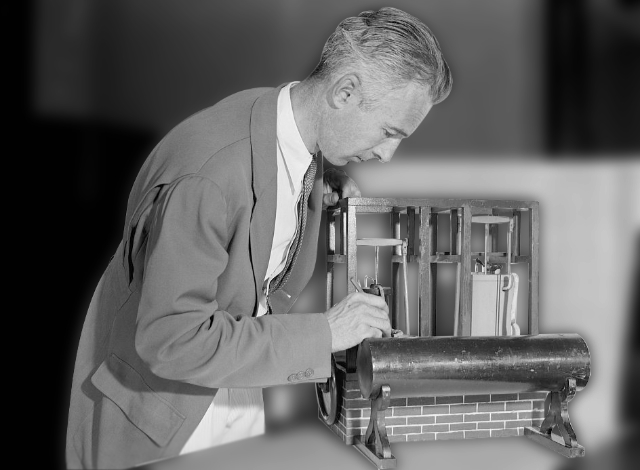
Schuyler Skaats Wheeler: The Role of Electric Cooling Fans in the Pre-Air Conditioning Era
Before the widespread use of modern air conditioning, electric cooling fans played a vital role in providing relief from the heat. These fans operated on a simple principle: they circulated air within a room, creating a breeze that helped to evaporate sweat from the skin, leading to a cooling sensation. While electric cooling fans did not reduce the temperature of the room, they made the environment feel cooler and more comfortable.
The invention of the electric fan can be traced back to the late 1800s. In 1882, Schuyler Skaats Wheeler, an American engineer, designed and patented the first electric fan. It was a desk fan with two blades, driven by an electric motor. Shortly after, the American company Westinghouse Electric began manufacturing electric fans for commercial use.
Electric cooling fans quickly became popular, offering an affordable and accessible alternative to other cooling methods. They were widely used in homes, offices, and public spaces, providing a much-needed respite from the summer heat. These early fans were made of metal, with exposed blades and simple designs. Over time, safety improvements were made, including the addition of protective cages around the blades.
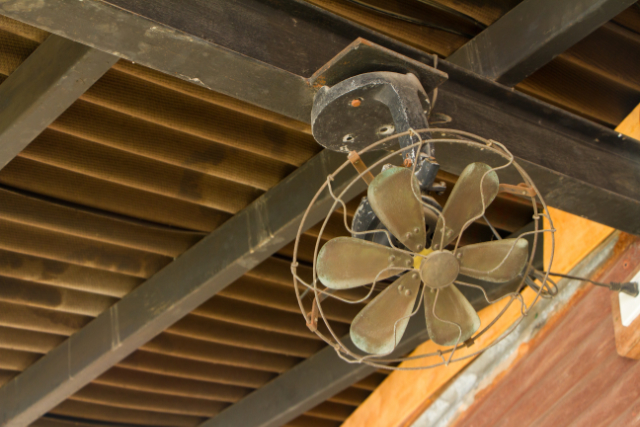
The adoption of electric cooling fans marked a significant step towards modern climate control. These fans laid the groundwork for the development of more sophisticated cooling technologies, ultimately leading to the invention of modern air conditioning systems. While electric fans were limited in their ability to cool large spaces or reduce humidity, they played a crucial role in making indoor environments more bearable during hot weather.
Today, electric cooling fans continue to be used alongside air conditioning systems, offering a cost-effective and energy-efficient way to enhance comfort.
The Genius of Willis Haviland Carrier
Born into an era of great industrial advancement, Willis Haviland Carrier emerged not only as an inventor but as an astute engineer deeply embedded in the realms of thermodynamics and heat transfer. Completing his academic journey from the esteemed Cornell University, Carrier was equipped with an in-depth knowledge of engineering that wasn't just theoretical – it was practical, applicable, and ready to solve real-world problems.
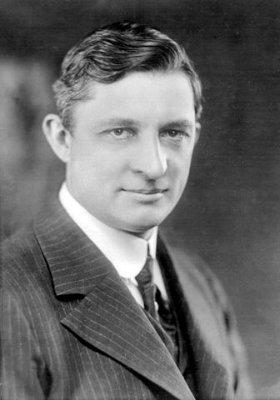
This knowledge wasn't restricted to textbooks. For Carrier, it translated into an ability to address the challenges that many industries faced due to humidity. Imagine an era where industries were booming, but one elemental factor, humidity, posed consistent challenges. But for every challenge, there's a mind trying to decipher its intricacies. Carrier, with his solid foundation in mechanical engineering and a penchant for innovation, was that mind. He wasn't just another engineer; he was uniquely poised, driven by a mixture of expertise and ambition, to tackle and transform the problem of industrial humidity into a story of success.
Why Did Willis Carrier Invent the Air Conditioner?
The narrative often surrounds the major outcomes, but it's the intricate problems that inspire grand solutions. For Willis Carrier, the push towards inventing the air conditioner wasn't a sudden eureka moment, but a real-life industrial challenge.
Enter the Sackett-Wilhelms Lithographing & Publishing Company, located in the bustling borough of Brooklyn, New York. As the wheels of their printing press spun, they encountered a consistent adversary: fluctuating humidity levels. In the world of printing, precision is paramount. Even the smallest variation in humidity played havoc with the paper's dimensions, leading to misalignments in the layered color printing process. High humidity caused the paper to expand, rendering the meticulous process of color layering inconsistent. On the opposite spectrum, low humidity led to the paper contracting, creating similar inconsistencies.
Carrier, with his foundational knowledge and the immediate need to address this challenge, started devising a solution. His vision was clear – create an environment where the dimensions of the paper remain constant, unaffected by external humidity. Through rigorous engineering and innovation, Carrier produced a system adept at controlling both temperature and humidity. The genius lay in passing air through cooled coils. This not only reduced the temperature but crucially extracted moisture, stabilizing humidity levels. The outcome? The Sackett-Wilhelms facility now boasted a consistent, controlled climate, marking the end of their printing woes.
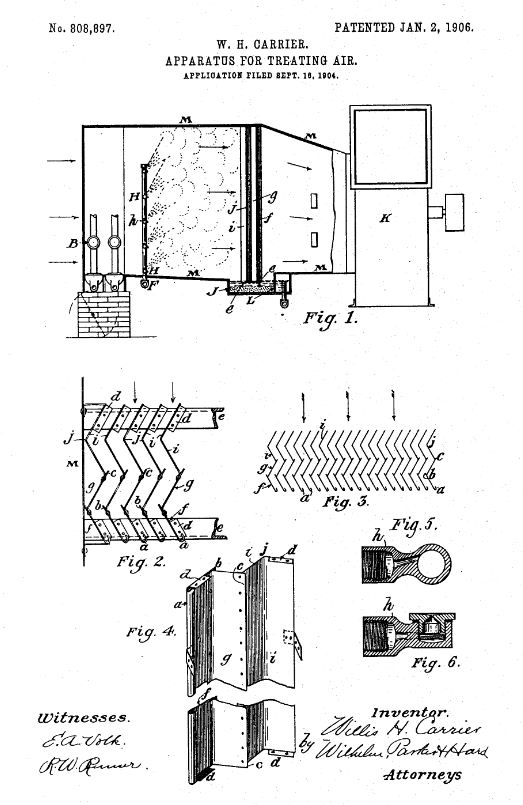
But this was more than a solution for one company. This was the birth of an idea that would eventually transcend its initial purpose. Carrier's "Apparatus for Treating Air", solidified by US Patent #808,897, wasn't just a device—it was a testament to his understanding of the profound effects of humidity on materials and industrial processes. The stage was set for air conditioning to make its mark on the world, all thanks to a printing problem in Brooklyn.
The Evolution and Expansion of Carrier's Vision
With the foundation laid by the solution for the Sackett-Wilhelms Lithographing & Publishing Company, Carrier's invention started its transformative journey in the industrial world. But the printing industry was just the tip of the iceberg; the profound impact of his system on the quality of printed materials became evident and captured the attention of various sectors.
In 1911, Carrier presented a groundbreaking concept: his Rational Psychrometric Formulae. This wasn't just another technical jargon; it was the very science that air conditioning technology would lean on in the decades to come. As Carrier deepened his understanding and application, the potential of his invention to redefine comfort and process efficiency in various industries became clearer.
1914 heralded a significant milestone. Air conditioning, which until then was seen primarily as an industrial solution, entered the domestic arena. A mansion in Minneapolis became the first home to boast an air conditioning machine, a testament to Carrier's vision. Towering at seven feet and stretching 20 feet wide, this machine was a behemoth, indicating the early stages of a technology that would soon become a household staple.
By 1915, Carrier's vision and prowess caught the attention of fellow engineers from the Buffalo Forge Company. Recognizing the potential, they collaborated, culminating in the formation of the Carrier Air Conditioning Company of America. With this, Carrier wasn't just solving humidity problems for one company; he was manufacturing air conditioning units for a plethora of industries.
As the 1920s rolled in, Carrier and his team were faced with a challenge. The cooling systems of the time primarily relied on ammonia—a toxic compound. Recognizing the risks and driven by the ethos of safety and innovation, by 1920, Carrier's team introduced a game-changing replacement: the safer coolant, dyeline. This wasn't just a substitution; it was an upgrade. Alongside this change, they miniaturized their units, making them versatile enough to find a place in department stores, office buildings, and even the confines of railroad cars.
The culmination of this decade of innovation and expansion? By 1930, the corridors of power—the White House and several executive office buildings—were cooled and comforted by Carrier's air conditioning systems. A seal of approval that Carrier's invention was not just a commercial success, but a transformative force in modern living and governance.
Carrier's Lasting Impact and Legacy
As the decades progressed, Willis Carrier's invention evolved from a niche solution for a printing press in Brooklyn to a necessity in homes, industries, and governmental establishments across the country. The air conditioning system was no longer just about comfort; it became synonymous with efficiency, preservation, and quality across various industries.
The film industry, for instance, found in air conditioning a way to provide comfortable environments for movie-goers, transforming theaters into enticing havens during hot summer days. The pharmaceutical world, with its intricate requirements for temperature and humidity, leaned on Carrier's invention to maintain the quality and stability of medicines, ensuring that crucial drugs retained their efficacy. Even the tobacco industry, where the moisture content of leaves is paramount, turned to Carrier systems to achieve the perfect blend.
But what truly underscored the universal appeal of Carrier's invention was its adoption in the very heart of American governance. When the White House and executive office buildings incorporated air conditioning by 1930, it was clear that Carrier's invention had transcended its commercial beginnings to become an integral part of American infrastructure.
Furthermore, Carrier's work redefined measurements in the industry. The BTU (British Thermal Unit), once a measure capturing the cooling ability of melting ice, transitioned under Carrier's influence to describe the cooling capacity of modern air conditioning systems.
Yet, even as his technological advancements took center stage, it was Carrier's visionary foresight that cemented his legacy. The Carrier Air Conditioning Company of America, founded in collaboration with engineers from the Buffalo Forge Company, not only scaled up the production of air conditioning units but also became a testament to Carrier's entrepreneurial spirit. Today, the company remains a global leader in HVAC systems, a living testament to the genius of its founder.
To this day, Willis Carrier is celebrated as the "father of air conditioning." His contributions have not only elevated industries but have fundamentally changed the way we perceive indoor comfort. From those early days in Brooklyn to a global revolution in climate control, Carrier's journey encapsulates the essence of innovation - seeing a problem, imagining a solution, and changing the world in the process.
Evolution of Air Conditioning into What It Is Today
After its successful application in the industrial sector, air conditioning began to find its way into public spaces. One of the first major breakthroughs was the installation of air conditioning in movie theaters. The first theater to be air-conditioned was the Rivoli Theater in New York City in 1925. This innovation made movie theaters popular retreats during the hot summer months, as people flocked to these cool havens for relief from the heat. The success of air-conditioned theaters led to the installation of air conditioning systems in other public spaces, such as department stores, restaurants, and office buildings.
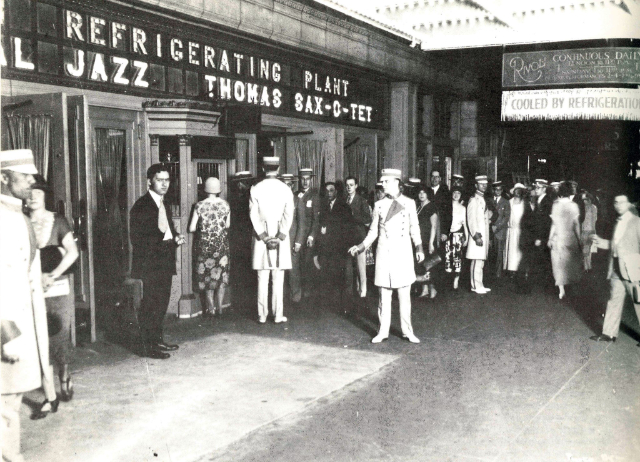
The 1920s: The Advent of Cooling in Public Spaces
During the 1920s, a cool breeze began to change the way people lived and worked. Air conditioning, once a novel concept, started seeping its way into the collective American consciousness.
Cinematic Chill: The Theater Revolution
A significant milestone was the introduction of air conditioning to the Rivoli Theater in New York in 1925. This was not merely a luxury but a game-changer. As audiences flocked to the theater to escape the summer heat, other theaters quickly took notice, leading to a wave of installations in cinemas across the country.
A Cooler Shopping and Working Experience
Simultaneously, upscale department stores and high-end office buildings began to see the value in creating a more comfortable shopping and working environment. They installed air conditioning systems, making them attractive destinations for consumers and employees alike during the sweltering summer months.
One of the most profound impacts was on worker productivity. Before air conditioning, the stifling heat of summer months would drastically reduce the output in offices. Now, with the advent of these cooling systems, businesses recognized that they could maintain, if not increase, productivity levels year-round.
The Dream of Home Cooling
The 1920s heralded the inception of household air conditioning units. While prototypes and initial models began to surface, their steep prices made them inaccessible for the average American. Yet, these advancements indicated a burgeoning desire for summertime household comfort. An example of early adoption was the Charles Gates mansion, which was famously fitted with an air conditioning system. Although an exception rather than the norm, the Gates mansion showcased the luxurious potential of in-home cooling and planted the seed of aspiration in many homeowners' minds.
The 1920s saw the birth of household air conditioning units. Although prototypes and early models emerged, they were largely out of reach for the average American household due to their high costs. Still, the seed had been planted, and the dream of a cool home during the summer began to take root in the American psyche.
The 1930s: Pioneering Commercial Use
The 1930s marked a pivotal decade for the air conditioning industry, as its applications started to expand beyond industrial spaces into the realm of everyday consumer life.
One of the most notable expansions during this period was the embrace of air conditioning in commercial venues. Movie theaters were among the early adopters of this technology, with owners recognizing the potential to attract larger audiences, especially during the hot summer months. Theatres promoted themselves as "cooled by refrigeration", transforming hot and stuffy viewing experiences into luxurious escapes from the summer heat. This not only enhanced the comfort of patrons but also made the cinema-going experience more appealing, revolutionizing the entertainment industry.
Window Units – Bringing Comfort to the Masses
The first breakthrough in residential air conditioning came in the form of window units. In 1932, H.H. Schultz and J.Q. Sherman patented the first individual room air conditioner that could be placed on a window ledge. However, these early units were expensive and out of reach for most households. It wasn't until the post-World War II economic boom in the 1950s that window air conditioners became more affordable and accessible to the average American family. The convenience and relatively low cost of these units made them a popular choice for homeowners looking to escape the summer heat.

An Early Novelty – The Automobile Air Conditioner
The automobile industry wasn't far behind. The 1930s witnessed the introduction of air conditioning in cars. Working under Houde Engineering, Ralph Peo applied for the first patent for an autmotive air conditioning device, titled "Air Cooling Unit for Automobiles". Packard became the first automaker to offer air conditioning in 1939 for their 1940 model cars. They were manufacturered by Bishop and Babcock, and were installed in approximately 2,000 cars.
Although initially a luxury feature found only in high-end models, its presence marked the beginning of a new era in automotive comfort, paving the way for the now-ubiquitous feature in vehicles.
Sizing Down
Furthermore, the design aesthetics and functional mechanics of air conditioning units underwent an evolution. Manufacturers began to prioritize compactness, resulting in more streamlined unit designs. These emerging designs not only required less space but also fit more seamlessly into the interiors of homes and businesses.
The 1930s could be characterized as the decade where air conditioning transitioned from a luxury for the few to an accessible comfort for the many, setting the stage for the massive surge in popularity that would come in subsequent decades.
The 1940s: Wartime Innovations and Post-War Boom
Adapting to War: Technological Progress amid Conflict
The outbreak of World War II brought about significant changes to various industries, with many undergoing rapid innovation and adaptation to meet wartime needs. The technological advancements driven by the urgency of the conflict had a profound influence on several sectors, including the air conditioning industry. The war accelerated the development of many technologies, and these advancements set the stage for the subsequent proliferation of modern air conditioning systems.
The Home Front Sacrifices: A Cooling Pause
While the war necessitated technological progression, it also meant that resources typically designated for domestic production, including those for air conditioning units, were reallocated for wartime efforts. Manufacturing plants that once produced household appliances, including air conditioning units, shifted their focus to support the war, producing items like ammunition, aircraft parts, and other essential military equipment. This reallocation resulted in a noticeable dip in the production and availability of domestic air conditioning systems during the wartime years.
The Resurgence: From War Machines to Cooling Comfort
As World War II came to an end, the manufacturing facilities that had been fervently supporting the war effort found themselves with a surplus of machinery and resources. Instead of allowing this machinery to sit idle, industries repurposed wartime equipment for peacetime needs. For the air conditioning industry, this meant a resurgence in production capacity. The post-war economic boom, combined with the advancements made during the war and the newly available machinery, led to a significant increase in the production of air conditioning units. This surge not only met the pent-up demand from the war years but also set the stage for the widespread adoption of air conditioning in the decades that followed.
The 1950s: Mass Market Accessibility
The 1950s marked a pivotal era for air conditioning. Until this time, the luxury of cooled interiors was primarily reserved for affluent households and select businesses. However, this decade brought air conditioning to the masses, dramatically altering the landscape of comfort in American homes.
Introduction of Affordable Window Units for Residential Use:
One of the most significant developments of the 1950s was the introduction of cost-effective window units. Manufacturers recognized the untapped potential of the middle-class market and began producing air conditioning units tailored for residential spaces. These window units were compact, relatively easy to install, and, most importantly, affordable. As a result, air conditioning was no longer an exclusive luxury but a comfort many could afford.
Rising Popularity in Homes, Leading to a New Wave of Suburban Comfort
With the proliferation of these window units, suburban households quickly embraced the benefits of air conditioning. It was not only about cooling the indoors but also about enhancing the quality of life. The 1950s suburban boom, characterized by an exodus from crowded city centers to the sprawling suburbs, was complemented by this newfound indoor comfort. Homes were now havens of cool relaxation during sweltering summer days.
Rotary Compressors Reduce Size and Increase Efficiency
Technological advancements also played a pivotal role in the AC's evolution during this period. The introduction of smaller compressors marked a departure from the older, bulkier designs. These compressors were more compact and facilitated the reduction in the overall size of the air conditioning units. Additionally, they operated more efficiently, consuming less power while delivering effective cooling, thereby making them a more attractive option for the average homeowner both in terms of cost and functionality.
The 1950s were transformative for the world of air conditioning. The fusion of technological advancements, strategic market targeting, and the socio-economic landscape of post-war America propelled the air conditioner from a niche luxury to an essential household item. The decade laid the foundation for the ubiquity of air conditioning in modern-day living, redefining the very nature of home comfort.
The 1960s: Central Air Conditioning
As America rolled into the 1960s, the desires of homeowners evolved alongside burgeoning technology. The decade brought a transformative shift in the world of cooling, marking a move from standalone window units to a more integrated, home-wide solution: central air conditioning. This decade can be aptly characterized by the motto, "out with the old, in with the integrated."
Shift from Individual Units to Central Air Systems in Homes
While the window units of the 1950s brought affordable cooling to many, there was a thirst for a more seamless solution that didn't interrupt window views or necessitate cumbersome installations each summer. Central air conditioning emerged as the answer. Unlike window units that cooled individual rooms, central systems provided consistent cooling throughout the entire home. This was achieved through a centralized unit, often located outside or in basements, that cooled air and then circulated it through the home.
Use of Thermostats Becomes More Common for Precise Temperature Control
With the adoption of central air systems came the desire for more precise control over interior climates. The 1960s witnessed the ascent of the thermostat as a household staple. Gone were the days of manual adjustments and guesswork. Homeowners could now set an exact desired temperature, and the system would work to maintain that temperature throughout the home. This not only maximized comfort but also improved energy efficiency, as systems could cycle off once the desired temperature was achieved.
Introduction of Ducted Systems to Distribute Cooled Air
The true genius of central air conditioning lay in its ability to distribute cooled air to every nook and cranny of a home, ensuring uniform comfort. This was made possible by the introduction of ducted systems. These systems, comprised of a network of ducts hidden within walls and ceilings, carried cooled air from the central unit and released it through vents in various rooms. This not only led to a more aesthetically pleasing solution (with the absence of clunky units in windows) but also allowed for an even distribution of air, eliminating hot or cold spots.
The 1960s was truly a decade of integration and precision in the world of air conditioning. Central air systems, paired with thermostats and ducted distribution, redefined the concept of home comfort. As homeowners embraced these innovations, the scene was set for further technological advancements in the decades to come, propelling the industry into an era of unparalleled growth and innovation.
The 1970s: Energy Crisis and Efficiency
The 1970s was a tumultuous time on the global stage, with an energy crisis that gripped nations and shifted the paradigms of many industries, including air conditioning. As oil prices skyrocketed and resources dwindled, there was a pronounced emphasis on conservation, leading to significant strides in energy efficiency within the AC realm.
The Global Energy Crisis Spurs a Push for More Energy-Efficient Units
In response to the energy crisis that began in 1973 due to geopolitical events, manufacturers were pressed to devise air conditioning solutions that consumed less power without compromising on performance. As homeowners grappled with soaring electricity bills, the demand for energy-efficient air conditioners surged. Manufacturers raced to modify designs, optimize systems, and innovate in ways that reduced energy consumption.
Government Standards Set for Energy Consumption in AC Units
With the energy situation becoming increasingly dire, governments worldwide recognized the need for intervention. In the U.S., this led to the establishment of the Department of Energy (DOE) in 1977, tasked with addressing the nation's energy problems. The DOE, in collaboration with other entities, began setting standards for various appliances, including air conditioners. These standards, which specified minimum energy efficiency ratios (EER), forced manufacturers to innovate and produce units that met or exceeded these benchmarks. The ultimate goal was to ensure that consumers received energy-efficient products, helping to curb national energy consumption.
Innovation in Refrigerants to Replace Harmful Freon
The 1970s also saw growing concerns about the environmental impacts of certain chemicals used in air conditioning. Freon, a commonly used refrigerant, was discovered to have detrimental effects on the ozone layer. This realization led to a push for more eco-friendly alternatives. Manufacturers, in tandem with environmental agencies, began researching and eventually introducing new refrigerants that were less harmful to the environment. This shift not only demonstrated the industry's commitment to global well-being but also set the stage for further innovations in refrigerant technology.
The 1970s was a decade of reflection, adaptation, and forward-thinking in the air conditioning industry. The pressures of the energy crisis, coupled with growing environmental awareness, forged a path toward efficiency and sustainability. As the world grappled with challenges, the AC industry showcased resilience and innovation, ensuring that comfort at home didn't come at the expense of the planet or the pocketbook.
The 1980s: Digital Age and Programmable Thermostats
The 1980s, often characterized as the dawn of the digital age, saw a tremendous evolution in technology across multiple industries. For the air conditioning sector, it was no different. The decade ushered in advancements that not only brought greater convenience and control to users but also continued to emphasize environmental responsibility.
Rise of Electronics Introduces Programmable Thermostats
With the electronics boom of the 1980s, the integration of digital technology into household appliances became more prevalent. A standout innovation for the AC industry was the programmable thermostat. Unlike their analog predecessors, these thermostats allowed users to set specific temperatures for different times of the day and different days of the week. This meant that homeowners could program their AC units to reduce cooling when they were away from home and ramp it up just before they returned, leading to both increased comfort and energy savings.
Units Equipped with Timers, Sleep Settings, and Variable Fan Speeds
With the infusion of digital tech, air conditioners became more versatile and user-centric. Features such as timers allowed users to set their AC units to turn on or off at specific times. Sleep settings adjusted the temperature gradually to ensure a comfortable sleeping environment, and variable fan speeds gave users the flexibility to choose between faster cooling or quieter operation. These features not only enhanced user experience but also contributed to more efficient energy usage.
ECM Motors: Introduced in 1987 by GE, Electronically Commutated Motors (ECMs) represent a leap forward in fan motor technology. Traditional fan motors operate at a fixed speed, whereas ECMs can adjust their speed to the demand. This dynamic adjustment capability means the motor only uses the energy necessary for the task, reducing unnecessary power consumption and ensuring optimal airflow. ECM motors not only contribute to energy savings but also provide quieter operation and longer equipment life due to reduced wear and tear.

Inverters: Unlike traditional air conditioning systems that run compressors at a fixed speed, modern A/C systems equipped with inverters have the ability to adjust the compressor's speed. Introduced in 1980 by Toshiba, the inverter technology enables the system to operate at variable speeds, adjusting the cooling output based on the current demand. This results in a more precise temperature control, reduced start-up loads, and most importantly, decreased power consumption.

Emphasis on Ozone Layer Protection and Shift Away from CFC Refrigerants
The environmental awakening that began in the 1970s gained momentum in the 1980s. With the discovery of the ozone hole in 1985, there was a renewed urgency to address the environmental impacts of certain substances. Chlorofluorocarbons (CFCs), once standard in AC units as refrigerants, were identified as primary culprits in ozone layer depletion. The 1980s saw global initiatives, most notably the Montreal Protocol in 1987, that aimed at phasing out the use of CFCs. The AC industry responded by accelerating the shift towards alternative refrigerants that were more environmentally benign.
The 1980s were transformative for the air conditioning industry. Embracing the digital revolution led to products that were smarter, more user-friendly, and efficient. Concurrently, the commitment to environmental preservation ensured that innovations were sustainable, marking a balance between technological advancement and ecological responsibility.
The 1990s: Environmental Concerns and Innovations
The closing decade of the 20th century marked a period of rapid global change, with the world becoming increasingly interconnected and technology seeing exponential growth. The air conditioning industry, too, underwent significant transformation, with an intensified focus on sustainability coupled with technological advancements aimed at delivering superior comfort and efficiency to users.
Further Exploration of Environmentally-Friendly Refrigerants
The repercussions of the ozone hole discovery in the 1980s continued to reverberate in the 1990s. With the phase-out of CFCs set in motion by the Montreal Protocol, the industry delved deeper into finding sustainable alternatives. Hydrochlorofluorocarbons (HCFCs) initially emerged as transitional replacements, offering reduced ozone depletion potential compared to CFCs. Still, the search didn't stop there. Hydrofluorocarbons (HFCs) soon came into the picture, providing even better environmental profiles by having no ozone-depleting properties.
Increased Market Competition Leads to Added Features and Better Designs
As the global economy expanded, so did the air conditioning market. With more players entering the arena, competition became fiercer. This competitive environment led manufacturers to innovate and differentiate their offerings. Air conditioning units began to sport sleeker designs, making them more aesthetically pleasing and suitable for modern homes. Additionally, manufacturers introduced a myriad of features such as improved air filtration, dehumidifiers, and even remote control operation, aiming to enhance user experience and comfort.
The 2000s: Smart Home Integration
The dawn of the new millennium heralded a revolution in the way we live and interact with our environments. As the digital age matured, it was no longer just about connectivity between people; it was also about the connectivity between devices, appliances, and infrastructure. The air conditioning industry, staying abreast of these changes, took strides in intertwining its technology with the burgeoning smart home movement.
Air Conditioners Become Compatible with Home Automation Systems
The concept of the "smart home" began to gain traction in the early 2000s, with homeowners looking for more intuitive and interconnected living spaces. In response, air conditioning manufacturers started designing units that could seamlessly integrate with other home systems. Whether it was lights that dimmed when the AC was turned on or blinds that closed during the hottest parts of the day, air conditioners became an integral cog in the machinery of a home's intelligence system.
Wi-Fi-Enabled Thermostats Allow Remote Control and Monitoring
The rise of smartphones and ubiquitous internet access meant that homeowners no longer wanted to be tethered to physical controls. The industry answered with Wi-Fi-enabled thermostats, allowing users to adjust and monitor their home's temperature remotely. This meant that on a cold winter day, one could start their AC's heating mode while still at work, ensuring a warm and welcoming environment upon arrival. Conversely, if someone forgot to turn off their AC while leaving for a holiday, they could easily do so from anywhere in the world, providing peace of mind and energy savings.
Development of Multisplit Systems Allowing Different Temperature Zones in Homes
One size does not fit all, and the same goes for temperature preferences. Recognizing this, the 2000s saw the rise of multisplit systems that allowed different rooms or zones in a home to maintain varying temperatures. This meant that while a kitchen might need to be cooler due to the heat generated by cooking, a nursery could be kept warmer for a baby's comfort. Such systems enhanced individual comfort while ensuring efficient energy use, as only occupied areas needed to be cooled or heated.
The 2000s was a decade of integration for the air conditioning industry. As the boundaries between technology domains blurred, air conditioning units transformed from standalone cooling devices to key components in the smart home ecosystem. This shift not only improved user convenience and comfort but also paved the way for more sustainable and energy-efficient practices in the sector.
The 2010s: AI, IoT, and the Rise of Eco-Friendly Units
The 2010s was a decade marked by rapid technological advancements, as industries globally harnessed the power of emerging tools and platforms. The air conditioning industry was no exception. It saw transformative changes with the embrace of Artificial Intelligence, the Internet of Things, and a concerted effort toward environmental sustainability.
Integration of Artificial Intelligence for Predictive Cooling and Maintenance Alerts
AI changed the way air conditioners functioned and interacted with users. Predictive cooling algorithms were developed to understand user behavior, noting patterns like when the household typically returned home or which rooms were occupied at certain times. This allowed AC units to preemptively cool spaces for optimal comfort without manual input. Additionally, AI-driven diagnostics became commonplace, with systems capable of recognizing potential malfunctions before they became severe issues. Users could receive maintenance alerts, thus extending the lifespan of units and preventing costly breakdowns.
Internet of Things (IoT) Connectivity Allows for Smart Grid Integration and Energy-Saving Modes During Peak Times
IoT transformed individual air conditioners into components of a vast, interconnected network. AC units could now communicate with broader energy grids. During times of high electricity demand, connected AC units could automatically switch to energy-saving modes, reducing grid strain and ensuring more efficient energy distribution. Such integrations didn't just benefit individual households in terms of energy bills, but they also played a significant role in energy management at a macro level, helping to prevent blackouts and maintain grid stability.
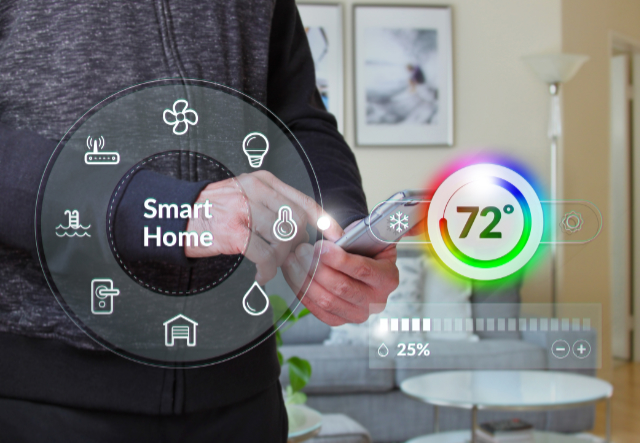
Strong Emphasis on Energy Efficiency with Energy Star Ratings Becoming Standard
Environmental concerns took center stage in the 2010s, and the air conditioning industry was at the forefront of this movement. There was a push for more eco-friendly units that consumed less power while delivering optimal performance. The Energy Star rating, backed by governmental agencies, became a benchmark for consumers. AC units that earned this certification met stringent energy efficiency criteria, assuring users of their green credentials. The badge not only signaled reduced carbon footprints but also promised significant cost savings over the unit's lifespan.
The 2010s were characterized by the marriage of technology and sustainability in the air conditioning domain. As the world became more connected and environmentally conscious, the industry stepped up, delivering solutions that were smart, efficient, and gentle on the planet. The advancements of this decade set a robust foundation for future innovations, ensuring that the comfort of cooling came hand in hand with care for the environment.
2020 and Beyond: Sustainable and Health-Focused Innovations
The dawn of the 2020s brought about a renewed commitment to the planet and personal well-being. Amid global climate change concerns and an ever-growing awareness about indoor air quality due to global health crises, the air conditioning industry underwent a transformation. Here's how the industry adapted, placing sustainability and health at the forefront of its innovations:
Introduction of Air Purifying Technologies Integrated with Cooling Units to Combat Pollution and Allergens
Health became a predominant concern, especially with increasing urban pollution and allergen levels. Recognizing this, manufacturers began integrating air purification systems within air conditioning units. These systems, often equipped with HEPA filters, UV light sanitization, and ionizers, were adept at trapping pollutants, bacteria, and allergens, ensuring that the air circulated was not only cool but also pure and healthy. Homes and offices were transformed into sanctuaries, offering respite from the deteriorating air quality outside.
The Phasing-Out of R-22 and Other Refrigerants
The environmental impact of refrigerants was already a concern in previous decades, but the 2020s saw a more aggressive approach to phasing out harmful refrigerants like R-22. This was driven by international agreements and a global commitment to reduce greenhouse gas emissions. Manufacturers scrambled to develop and adopt more eco-friendly refrigerants that had minimal ozone depletion potential and low global warming potential.
Solar-Powered Air Conditioners and Hybrid Units Gain Traction
Harnessing renewable energy sources became more than just a trend — it became a necessity. Solar-powered air conditioners began emerging as feasible options for homeowners and businesses. These units, often hybrid in nature, could switch between solar power and traditional electricity, optimizing energy usage and reducing reliance on fossil fuels. By leveraging the sun's energy, these air conditioners not only reduced electricity bills but also minimized carbon footprints.
Increased Emphasis on Reducing Carbon Footprints with More Eco-Friendly Designs and Materials
Sustainability wasn't just about energy efficiency; it was also about the materials used in the units. Manufacturers started using more recycled and recyclable materials in their designs. They also began streamlining production processes to reduce waste and conserve resources. The eco-conscious consumer now had choices that aligned with their values, from the unit's core to its exterior design.
Today, we have a convergence of technology, health, and environmental responsibility in the air conditioning industry. Manufacturers, under pressure from stricter government standards realized that comfort and well-being were intrinsically linked and that the future demanded innovations that nurtured both the planet and its inhabitants.
Reflecting on the Journey of Air Conditioning: From Humble Beginnings to Modern Innovations
The journey of air conditioning from its rudimentary beginnings to the modern, sophisticated systems we have today is a testament to human innovation and our desire for comfort. Air conditioning technology has transformed the way we live, work, and play, providing relief from the sweltering heat and enhancing our overall quality of life.
As we reflect on the progress made in air conditioning technology, it's essential to recognize the ongoing efforts to innovate and improve HVAC systems. Researchers and engineers continue to explore new materials, designs, and technologies to make air conditioning even more efficient, eco-friendly, and user-friendly. These advancements will shape the future of air conditioning, further enhancing our comfort and well-being.
Get the A/C Repair Parts You Need
If you're looking for high-quality HVAC parts to maintain, upgrade, or repair your air conditioning system, look no further than Technical Hot & Cold Parts. We offer a wide range of parts for various HVAC systems, ensuring that you'll find the right components for your specific needs.
Stay updated on the latest developments in the HVAC industry by following our blog and subscribing to our newsletter. We'll keep you informed about new technologies, industry trends, and tips to optimize your HVAC system for maximum comfort and efficiency.
Contact us, or shop our online store to discover how we can help you create a more comfortable and energy-efficient living or working environment.
Related Articles
- The Nitty-Gritty DIY Air Conditioner Maintenance Checklist
- Why is my A/C Blowing Hot Air and How to Fix It (A/C Troubleshooting Guide)
- Complete Guide to Bad A/C Capacitor Diagnosis and Repair
About the Author

James Clark is the Ecommerce Manager of TechnicalHotandColdParts.com and HVAC Controls Specialist (certified in Tridium and Carrier i-Vu controls) with a decade of experience at Technical Hot & Cold. His extensive background includes service calls, installations, and providing technical support to parts customers. James has been featured in the Washington Post and continues to share his knowledge, helping homeowners navigate HVAC repairs. In his spare time, he's playing music with his children and spending too much time working on his lawn.

